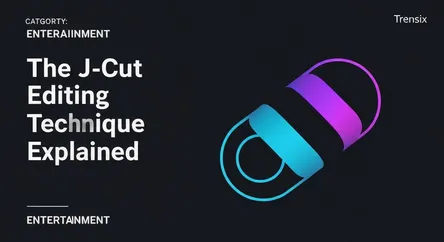Entertainment
The J-Cut Editing Technique Explained

Discover the J-cut, a key film editing technique where audio from the next scene begins before the video changes. Learn how it creates seamless flow.
What is a J-cut?
A J-cut is a film editing technique where the audio from an upcoming clip is heard before the video of that clip appears. This split edit gets its name from the "J" shape it forms on the editing timeline, as the audio track extends to the left under the preceding video clip. It's a common method for creating smooth transitions, particularly in dialogue scenes. The J-cut is the opposite of an L-cut, where audio from the current clip continues over the visuals of the next one.
Why is it trending?
The J-cut is a timeless technique that remains essential for professional-looking video. Its use is widespread across cinema, television, and online content on platforms like YouTube. As video editing software becomes more accessible, creators at all levels are adopting J-cuts to elevate their storytelling and create a more polished final product. It's a key tool for making conversations feel natural and maintaining a compelling narrative flow that holds viewer attention, which is crucial in today's fast-paced digital landscape.
How does it affect people?
For the audience, J-cuts create a more immersive viewing experience. By introducing the sound of the next scene early, the edit prepares the viewer for the visual change, making the transition feel organic and less jarring. This technique can build anticipation, provide context, or guide the viewer's emotions before a scene is even shown. It pulls the audience deeper into the story by sonically connecting different moments, making the narrative feel like a continuous, uninterrupted flow rather than a collection of separate shots.